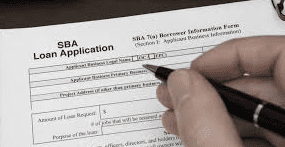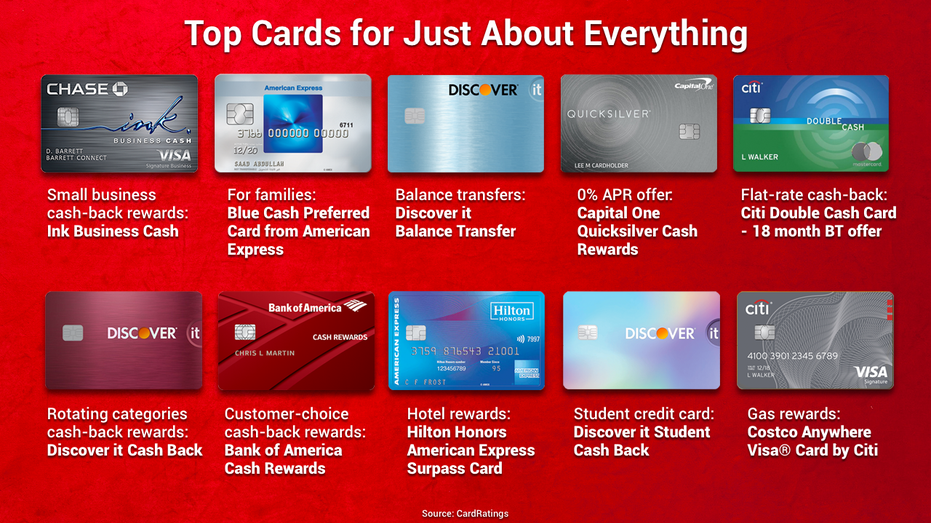The Benefits of Using ERP Systems in the Rice Industry
The Benefits of Using ERP Systems in the Rice Industry
Welcome to an exploration of the benefits that ERP systems bring to the rice industry! In today’s fast-paced world, efficiency and organization are key factors in the success of any business. By implementing ERP systems in the rice industry, companies can streamline their operations, improve communication between departments, and ultimately increase productivity. Let’s dive into how ERP systems can revolutionize the way the rice industry operates.
History of ERP Rice
ERP Rice has a rich history that dates back to the early 20th century. The story of ERP Rice begins with a small family-owned rice farm in the rural countryside of Thailand. The founders of ERP Rice, Mr. and Mrs. Phanichkul, were passionate about growing high-quality rice and providing it to the local community. They started small, with just a few acres of land and a handful of workers, but their dedication and hard work soon paid off.
As the demand for their rice grew, the Phanichkul family expanded their operations and invested in new equipment and technology to improve the quality and efficiency of their production process. They were among the first in the region to adopt modern farming techniques and innovative practices, which set them apart from other rice farmers in the area.
Over the years, ERP Rice gained a reputation for producing some of the best rice in Thailand. Their commitment to quality and sustainability attracted the attention of buyers from around the world, and soon ERP Rice was exporting their products to countries in Asia, Europe, and North America. The success of ERP Rice also brought prosperity to the local community, creating jobs and opportunities for many of the residents in the area.
Today, ERP Rice is a household name in the rice industry, known for its premium quality rice products and dedication to sustainable farming practices. The company continues to innovate and improve its operations, staying true to the vision and values set forth by its founders over a century ago. ERP Rice remains committed to providing customers with the finest rice products while also supporting the local community and environment.
Benefits of ERP Rice
ERP Rice, also known as electronically rough polished rice, is a innovative technology that has revolutionized the rice milling industry. This advanced system not only increases efficiency and saves time, but also offers numerous benefits to rice mill owners and farmers alike.
One of the key benefits of ERP Rice is the reduction in processing time. Traditional rice milling processes can be time-consuming and labor-intensive, but with ERP Rice, the process is streamlined and automated. This means that rice can be processed and polished much quicker, allowing for a faster turnaround time and increased productivity. Farmers can also benefit from this efficiency, as they are able to get their rice to market faster and increase their profits.
In addition to saving time, ERP Rice also helps to reduce waste. The automation and precision of the system allows for more accurate milling, resulting in less rice being lost during the process. This means that rice mill owners can maximize their yield and reduce their operating costs. Farmers can also benefit from this reduction in waste, as they are able to make the most of their harvest and increase their profits.
Another benefit of ERP Rice is the improved quality of the final product. The technology used in ERP Rice ensures that each grain of rice is processed consistently, resulting in a higher quality and more uniform product. This means that consumers can enjoy better tasting and more visually appealing rice, which can lead to increased sales and customer satisfaction for rice mill owners.
Furthermore, ERP Rice also offers increased traceability and transparency in the rice milling process. The system keeps detailed records of each batch of rice that is processed, allowing for greater accountability and quality control. This can help rice mill owners to meet regulatory requirements and ensure that their products are safe and of high quality.
Overall, ERP Rice is a game-changer for the rice milling industry. With its ability to save time, reduce waste, improve quality, and provide traceability, this advanced technology offers a wealth of benefits for rice mill owners and farmers alike. By investing in ERP Rice, businesses can increase their productivity, reduce costs, and ultimately see greater success in the competitive rice market.
Nutritional Value of ERP Rice
ERP Rice, also known as Enhanced Rice Performance, is a type of rice that has been genetically modified to provide higher nutritional value compared to traditional rice varieties. This type of rice is enriched with essential vitamins and minerals that are beneficial for human health. In this article, we will discuss the nutritional value of ERP Rice and how it can contribute to a healthier diet.
1. Macronutrients: ERP Rice is a good source of macronutrients, which are essential for energy production and growth. It contains carbohydrates, proteins, and fats in the right proportion to support overall health. Carbohydrates are the main source of energy for the body, while proteins are crucial for building and repairing tissues. Fats, on the other hand, are needed for proper cell function and hormone production.
2. Vitamins: ERP Rice is enriched with vitamins that are important for various functions in the body. It contains vitamin A, which is essential for maintaining healthy vision and immune function. Vitamin B complex, including thiamine, riboflavin, and niacin, is also present in ERP Rice, supporting metabolism and energy production. Vitamin D is another crucial nutrient found in ERP Rice, aiding in bone health and calcium absorption.
3. Minerals: One of the key benefits of ERP Rice is its high mineral content. It is a good source of iron, magnesium, and zinc, which are essential for maintaining proper bodily functions. Iron is important for oxygen transport in the blood and preventing anemia, while magnesium plays a crucial role in muscle and nerve function. Zinc, on the other hand, supports immune function and wound healing.
Another mineral found in ERP Rice is selenium, which acts as an antioxidant and protects cells from damage. Manganese is also present in ERP Rice, playing a role in metabolism and bone health. These minerals work together to support overall health and well-being, making ERP Rice a nutritious choice for a balanced diet.
4. Fiber: ERP Rice is a good source of dietary fiber, which is important for digestive health. Fiber helps regulate bowel movements, prevent constipation, and support the growth of beneficial bacteria in the gut. By including ERP Rice in your diet, you can increase your fiber intake and promote a healthy digestive system.
5. Antioxidants: ERP Rice contains antioxidants that help protect cells from damage caused by free radicals. These compounds have anti-inflammatory properties and may reduce the risk of chronic diseases such as heart disease, diabetes, and cancer. By consuming ERP Rice regularly, you can benefit from these antioxidant properties and support your overall health.
Overall, ERP Rice is a nutritious food choice that offers a range of vitamins, minerals, fiber, and antioxidants. By including ERP Rice in your diet, you can enjoy its health benefits and contribute to a balanced and wholesome eating plan.
Cooking Methods for ERP Rice
ERP rice can be cooked using several methods that help enhance its flavor and texture. Here are four popular cooking methods for preparing delicious ERP rice:
1. Steaming
Steaming is a traditional method of cooking ERP rice that helps preserve its natural flavor and nutrients. To steam ERP rice, you will need a rice cooker or a steamer. Simply add the desired amount of water and rice to the cooker or steamer, close the lid, and let the rice cook until tender. Steamed ERP rice is fluffy and light, making it an ideal option for pairing with curries or stir-fried dishes.
2. Boiling
Boiling is another common method of cooking ERP rice that is quick and easy. To boil ERP rice, use a pot or saucepan filled with water and bring it to a boil. Add the rice to the boiling water, stir once, and reduce the heat to simmer. Cook the rice until tender, then drain any excess water. Boiled ERP rice has a softer texture and is perfect for dishes like rice bowls or soups.
3. Microwave
Cooking ERP rice in the microwave is a convenient and time-saving method. To cook ERP rice in the microwave, rinse the rice and add it to a microwave-safe container with water. Cover the container with a lid or microwave-safe plastic wrap, leaving a small vent for steam to escape. Microwave the rice on high for about 10-15 minutes, or until the rice is cooked through. Fluff the rice with a fork before serving. Microwaved ERP rice is fluffy and aromatic, making it a great option for a quick meal.
4. Pressure Cooking
Pressure cooking is an efficient method for cooking ERP rice quickly while preserving its flavor and nutrients. To pressure cook ERP rice, use a pressure cooker and add the rinsed rice along with water. Close the pressure cooker lid securely and cook the rice on high pressure for about 5-7 minutes. Allow the pressure to release naturally before opening the lid. Fluff the rice with a fork and serve. Pressure-cooked ERP rice is fluffy and perfectly cooked, making it a versatile option for various dishes.
Try out these different cooking methods for ERP rice to discover which one suits your preference and fits your cooking routine. Whether you prefer steamed, boiled, microwaved, or pressure-cooked ERP rice, each method offers a unique way to enjoy this versatile and nutritious grain.
Sustainable Farming Practices for ERP Rice
When it comes to ERP Rice, sustainable farming practices are crucial not only for the environment but also for the quality of the rice produced. Farmers who grow ERP Rice are encouraged to adopt various sustainable farming practices to ensure the longevity and success of their crops. Here are some key sustainable farming practices for ERP Rice:
1. Crop Rotation: Crop rotation is a common practice in sustainable agriculture that involves planting different crops in the same field in sequential seasons. This helps to maintain soil fertility, reduce pest and disease pressure, and improve overall crop yield. For ERP Rice, farmers can rotate their rice crop with other crops like legumes or vegetables to ensure the health of the soil and the sustainability of their rice production.
2. Water Management: Water management is essential for rice cultivation, especially for ERP Rice which requires specific water levels throughout its growth stages. Farmers can implement sustainable water management practices such as using rice paddies efficiently, capturing rainwater for irrigation, and investing in water-saving technologies like drip irrigation systems. By managing water resources responsibly, farmers can minimize water waste and ensure the sustainability of their rice production.
3. Integrated Pest Management (IPM): Integrated Pest Management is a holistic approach to pest control that focuses on preventing pest damage through a combination of biological, cultural, and chemical control methods. For ERP Rice, farmers can implement IPM strategies by promoting natural predators of rice pests, using crop rotation to disrupt pest lifecycles, and only using chemical pesticides as a last resort. By adopting IPM practices, farmers can reduce their reliance on harmful chemicals and protect the environment while maintaining healthy rice crops.
4. Soil Health Management: Soil health is crucial for the success of ERP Rice cultivation, as healthy soils provide the necessary nutrients for strong plant growth and high rice yields. Farmers can improve soil health by practicing organic farming methods, incorporating organic matter into the soil through composting, and avoiding the use of synthetic fertilizers and pesticides. By prioritizing soil health, farmers can ensure the sustainability of their rice production and protect the long-term productivity of their land.
5. Agroforestry: Agroforestry is a sustainable farming practice that involves integrating trees and shrubs into agricultural landscapes to improve soil health, enhance biodiversity, and provide additional sources of income for farmers. Farmers growing ERP Rice can incorporate agroforestry practices by planting trees like nitrogen-fixing species or fruit trees around their rice fields. These trees can provide shade and wind protection for the rice crop, attract beneficial insects, and diversify farmers’ sources of income. By embracing agroforestry, farmers can create a more sustainable and resilient farming system that benefits both the environment and their communities.






